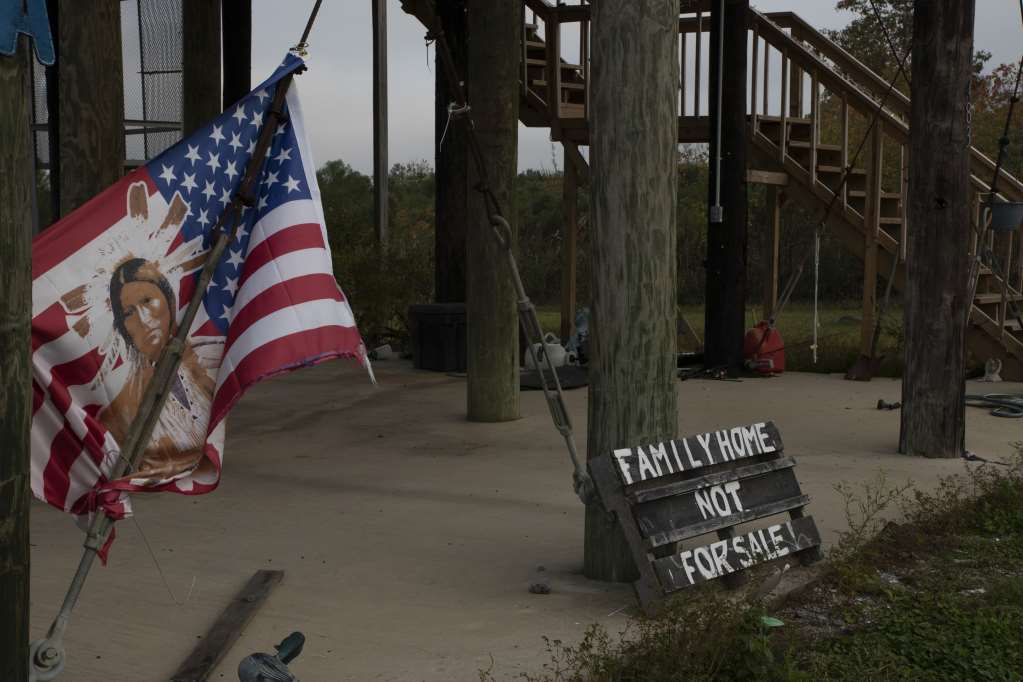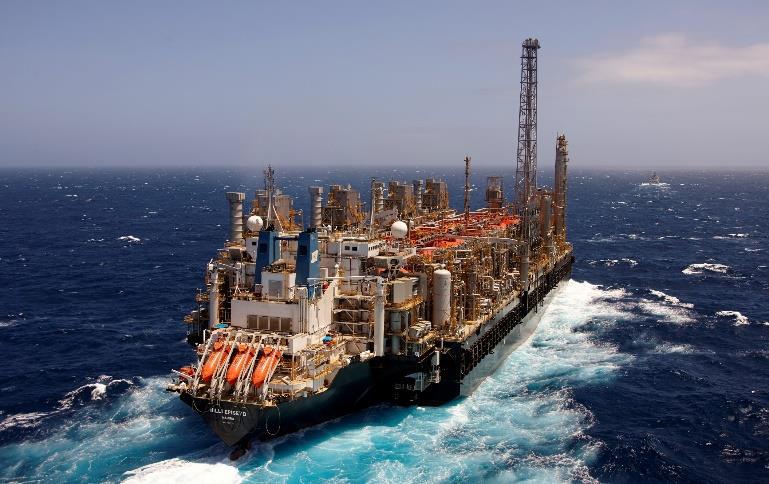Carlo Dughme from Delupis/ReCommon
Louisiana is one of the US states where it is historically the most active fossil fuel industry, But also one of the regions hardest hit by the climate crisis. The intensity of hurricanes increased exponentially. We all remember the tragedy of Hurricane Katrina (1,800 victims and $125 billion in damages), but recent phenomena such as Laura (2020) and Ida (2021) recorded the same intensity and left behind death and destruction.

Carlo Dughme from Delupis/ReCommon
Now the last frontier of the fossil business is called liquefied natural gas (LNG), that is, storing the extracted gas in liquid form, mostly by hydraulic fracturing, in various fields in the region and in the rest of the United States, and then shipping it via huge ships around the world. Louisiana has three of the seven LNG terminals active at the moment, and two more are under construction, Five have been approved and five more are pending the go-ahead. On a national level, if the proposed terminals see the light of day, there could be 26 LNG terminals across the US within five years. Compared to the second half of 2021, LNG exports increased by 12 percent in the first half of 2022, to the point where the United States has overtaken the Russian Federation and Qatar, becoming the first exporting country in the world. Italy ranks 13th in the world for gas imports from the United States between February 2016 and September 2022.

Carlo Dughme from Delupis/ReCommon
In the area around Lake Charles are the Cameron LNG and Calcasieu Pass terminals, but there’s also an impressive concentration of petrochemicals that spew smoke and flames nonstop. In some places, pipes and tanks just meet the gaze, in what appears to be one of the largest sacrifice areas in the country. “The communities that live near the plants are all African Americanoften very poor and still struggling with the effects of hurricanes,” explains Roishetta Ozane of Healthy Gulf, an NGO where she works as a community organizer. As she shows us the blue-leafed houses, which here refer to homes damaged by severe storms, Roachita explains that one of her main activities is to explain to people what climate change is and why this region is among the hardest hit by its effects.These phenomena only exacerbate the seemingly endless social crisis in Louisiana.14.20 percent of the state’s households live below the line Poverty The median household wage is $52,000 compared to a national figure of about $70,000 Unemployment is hitting hard, peaking at more than 40 percent, especially among African American communities.

John Allaire – Carlo Dogme from Delupis/ReCommon
LNG terminals help create quite a few jobs, John Allaire stresses. Someone who knows oil companies well, because he has been an employee of British Petroleum for over 30 years. But he now has an environmental consulting firm and is well aware that the fossil business is no longer sustainable in the long term. John lives in a huge caravan a stone’s throw from the ocean in one of the most valuable wetlands on the North American continent, inhabited by pelicans, cormorants, ducks and gulls. Where, however, the Calcasieu plant came into operation a few months ago and work will soon begin on two more plants. “They will drain many puddles and wipe out a stretch of beach, as if hurricanes weren’t enough to wash away parts of the coast,” John denounces. Meanwhile in Calcasio it is A coming and going of gas tankerssea giants who arrived in the few months of this station’s life Six times in Italian watersfurther proof that US LNG is increasingly important to our country.

Carlo Dughme from Delupis/ReCommon
Moving east, about a three-hour drive from Lake Charles, the effects of the climate emergency also caused by heavy gas use are palpable. Here it’s all tangled from the bayous, the swampy channels of the mighty Mississippi Delta that flow into the Gulf of Mexico, and there’s Jean Charles Island, which virtually disappears. Blame the others, the artificial channels dug by fossil companies to extract gas and oil, which means that salt water and storm surge can penetrate deep into the wetlands, accelerating erosion processes. Compared to 1955, 98% of the island has been lost. Approximately 200 people, mostly Native Americans who were forced to come to Jean Charles by law in 1830, were transported 40 kilometers and are in fact the first American environmental refugees in history.

“Prone to fits of apathy. Introvert. Award-winning internet evangelist. Extreme beer expert.”



